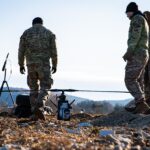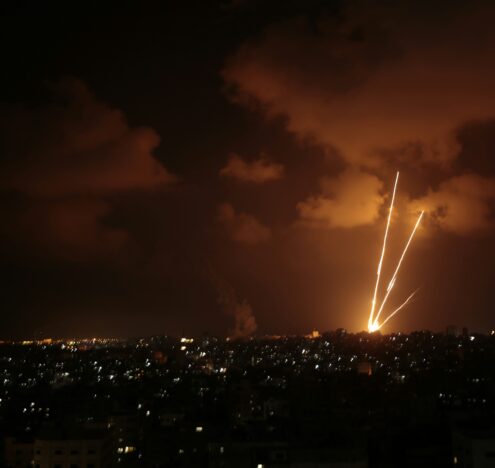America’s war in Afghanistan is far from over. The US military is just preparing to make the job of fighting endless wars a fully virtual position. The Biden administration is currently in talks with Pakistan to set up drone bases, and continue this endless war from the air. If a US withdrawal from Afghanistan means replacing boots on the ground with an indefinite campaign of bombings and targeted killings, then the war isn’t ending, it’s only shifting into a new phase.
Currently, the US drone war program is an ineffective counterterrorism tool with a significant lack of oversight. Not only is the US’s drone warfare program unable to differentiate between terrorists and civilians, it also erases clear distinctions between war and peace, and sets a dangerous precedent for the growing number of countries that fly armed drones.
Unable to distinguish between terrorists and civilians, the US drone warfare program sets a dangerous precedent for the growing number of countries that fly armed drones.
The August 2021 drone strike that targeted the perpetrators of the Kabul Airport bombing but killed 10 civilians including an aid worker and seven children, is a depressingly typical instance of US drone strikes killing civilians. Since 9/11, US drone strikes and airstrikes in countries, such as Afghanistan and Pakistan, have killed at least 22,000 civilians, and often miss their intended targets. For example, many drone strikes have targeted Taliban leader Mullah Omar, who went into hiding shortly after the US invasion of Afghanistan. Omar, however, successfully evaded the US drone campaign for years and died in hiding, only miles away from a US base.
While the US drone program isn’t an effective way of killing terrorists, it successfully terrorizes civilians who live with the constant threat of death from above. Zubair Rehman, a 13-year-old Pakistani child whose grandmother was killed by a drone, explained in his congressional testimony that he now fears blue skies, because drones are more likely to fly in clear weather than on cloudy days. It’s unsurprising then that drone strikes often destroy popular support for the US’s anti-terrorism programs in countries around the world.
Those are problems you have likely heard of before. The risks of drone warfare, however, don’t stop there.
THE RISKS THAT DRONE TECHNOLOGY POSES
Imagine a near-future world where most major militaries have the technological capability to use drones in the same way the US does today; a world where a senior American general visiting Taiwan is assassinated by a remote-controlled, flying robot equipped with laser-guided missiles that a drone pilot is controlling from more than 300 miles away. In other words, a person piloting a drone could bring the world to the brink of World War Three, from hundreds of miles away — and without even having to get up out of their chair. The world barely averted a war between the US and Iran after an analogous US drone strike against senior Iranian military commander Qassem Soleimani in Iraq in late 2019.
Americans still generally think of warfare as two groups of uniformed soldiers with tanks, trucks, and air support that meet face to face on a battlefield. More precise munitions, drone-based surveillance, and conflicts involving insurgents and terrorist groups all contribute to a changing situation where battlefields are geographically larger, there are no uniforms to distinguish enemy combatants from civilians, and soldiers increasingly experience war as people vs. technology rather than people vs. people. A conflict where one side has no airforce or tanks, and warfare relies more heavily on high-tech drones and low-tech IEDs creates a different set of challenges than we saw in conflicts like the First Gulf War in 1991.
Although the US was the first country to deploy armed drones in 2001, and 1 of only 4 countries with drones as recently as 2010, today it’s only one member of a rapidly expanding list of more than three dozen countries with armed drones. The recent border conflict between Azerbaijan and Armenia, which Azerbaijan won thanks to its use of drones, provides a glimpse into how drones will change conventional wars between countries. Azerbaijani attacks on Armenia’s air defense early on in the war made supply trucks far from the battlefield at risk while low-flying drones with precision missiles struck terror into Armenian soldiers on the battlefield.
WHAT CONGRESS NEEDS TO DO
So far, the Biden administration has launched far fewer drone strikes than either the Trump or Obama administrations, but the president still has far too much power to wage endless wars from the air. It’s time for Congress to restore its control over the president’s ability to conduct drone strikes and ensure accountability for civilians killed by drone strikes. Congress can do this in two ways: Publicizing more information about civilian deaths and reforming the Defense Department’s internal review process. Neither of these is simple.
Congress and the American people cannot rely on executive orders to ensure transparency around the drone program. The Obama administration reluctantly publicized information on civilian casualties from drone strikes through an executive order under mounting political pressure, but President Donald Trump simply reversed his predecessor’s decision with the stroke of a pen. Pentagon and CIA standards, such as the acceptable risk of civilian casualties for a given target and the level of on-the-ground intelligence required to allow a strike, all have massive room for improvement and congressional oversight. In many cases, there are no reliable intelligence assets on the ground to confirm a target’s identity, collect information like the laptop or written papers of an assassinated terrorist leader, or even ensure that the US isn’t killing hostages held by the Taliban.
Congress needs to mandate public information about civilian deaths in individual drone strikes as a matter of law, not the whims of whoever is currently in the White House. The key question is: Does Congress have the political will to do so?
Dan Baxter is currently an intern at a DC-based think tank and a recent graduate from George Washington University, where he studied International Affairs. As a Marcellus Policy Fellow with the John Quincy Adams Society, he published a report with recommendations on US negotiations with North Korea. His writing on American foreign policy has also appeared in the Realist Review.




















